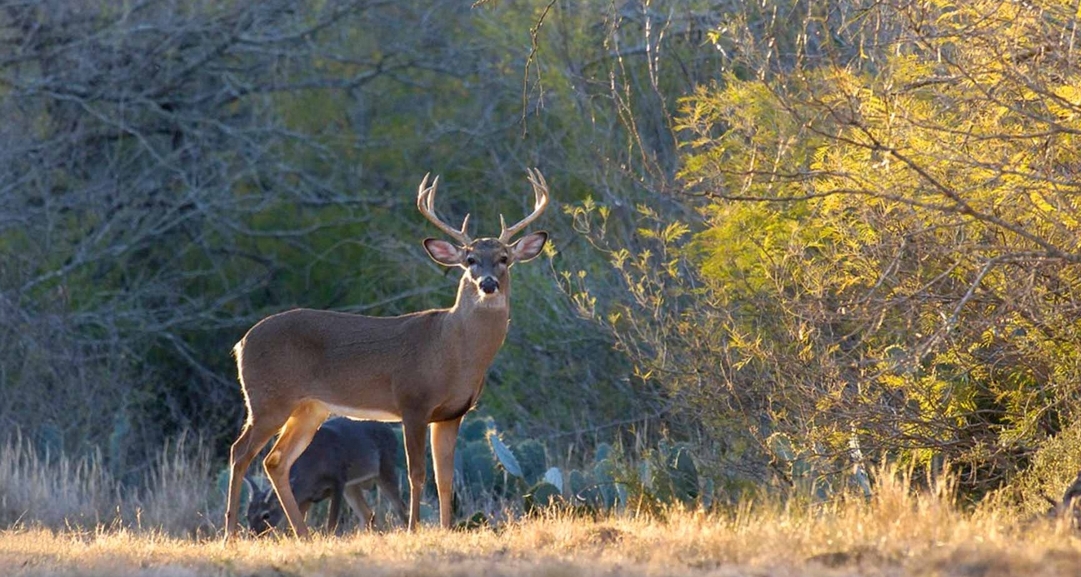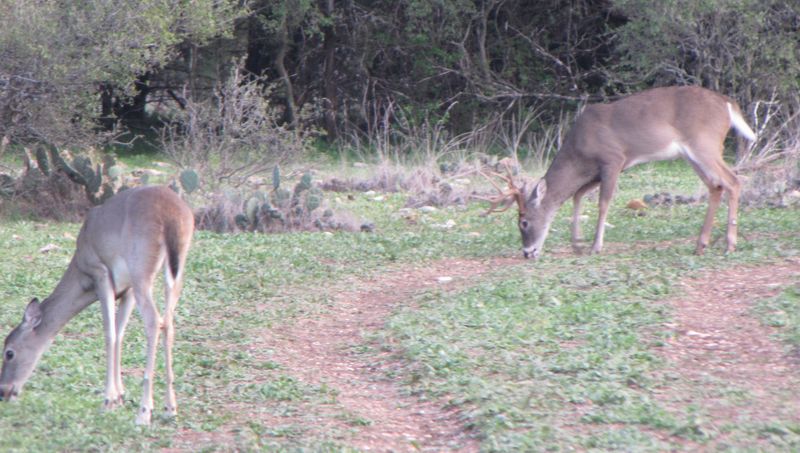The white-tailed deer gun opener was slow in Central and North Central Texas. The second weekend was not much better. However, cooler temperatures and good reports of rutting bucks moving throughout much of the state should make this coming weekend a great time to head out deer hunting! Although much of the state’s abundant acorn crop is now depleted, deer still have a choice between cool season forbs and lush winter food plots (where they exists). Areas that were barren during the summer are now a hodge-podge of high-protein forbs.
Except for the last couple of months, 2009 has been a tough year for most of Texas’ white-tailed deer population. The preceding winter, spring, and summer were dry. Very dry. Extremely dry. But all of that has changed. Deer that were in poor to fair body condition during the summer have gorged on fat-rich acorns are now looking to be in good shape. Although many ranches are reporting that deer body weights are lower this year compared to previous years, rainfall received during September and October have “saved” the year.
Winter food plots, which are typically the most reliable plots, found themselves high and dry at this time last year. But not this fall. Anyone that stuck a seed in the ground is now the beneficiary of a lush food plot, regardless of what was planted. Recently, however, not all food plots were being hit hard. I suspect that many hunters that were reporting low food plot use by deer up until now should find that cooler temperatures will move more deer onto those plots, and earlier in the day.
More deer is a good thing, especially during the rut! I’ve received reports from throughout much of the state, except South Texas, of bucks following does for the past couple of weeks, but I’ve seen a marked increase in chasing activity over the past four to five days. Central Texas hunters heading to the field over the next week should expect to see good action. If you can find the does you will find the bucks, and deer should be hitting food sources well thanks to cool, brisk weather over much of the state.
As always, make sure to keep the deer population in check with available habitat. On average, the body condition of deer has increased greatly going into the fall thanks to a solid acorn crop and additional forage provided by much-needed precipitation. Antler quality has not improved; lower than average antler growth was a result of the tough winter, spring, and summer we experience through most of Texas. However, keeping proper deer numbers where you hunt is an important component of deer and habitat management.
Too many deer means less food per mouth, and if the rain turns off, next year could be particularly tough since we are still way behind on total rainfall. In short, don’t hesitate to harvest deer where needed. Get out and enjoy the cooler weather and put yourself in position to take advantage of increased white-tailed deer rutting activity. And remember, squeeze the trigger!

